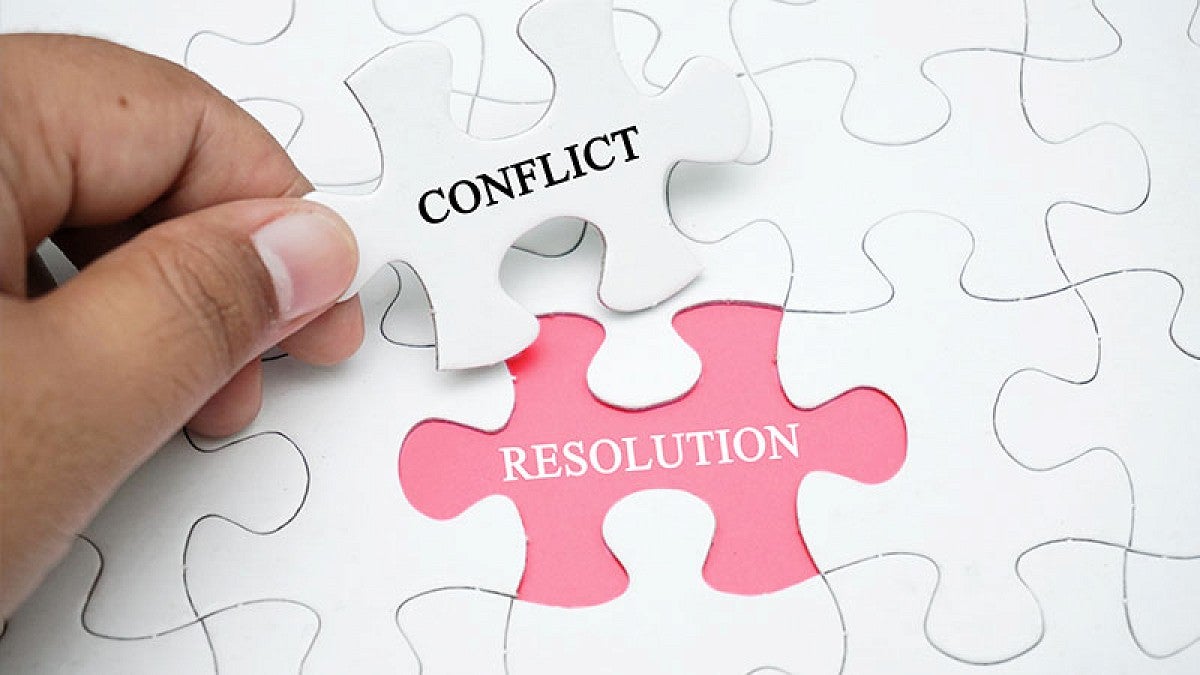Concerned about how traditional discipline could affect their students, administrators at Eugene’s Riverfront School and Career Center began looking for alternatives to tools like suspension and expulsion, which they worried could do more harm than good.
So they Riverfront turned to the UO’s John Inglish, director of the conflict and dispute resolution program in the School of Law, to help them consider different strategies to manage poor student behavior.
“We wanted to find a way to keep students in classrooms,” said Cheryl Zwillinger, a UO alum and program director for Riverfront School, a program of Looking Glass Community Services. Riverfront School is an alternative high school that offers education for at-risk and out-of-school youth.
Inglish specializes in restorative justice, a form of conflict resolution that has become increasingly prevalent in the criminal justice system, especially in juvenile justice, where it has helped lower recidivism rates. A growing number of school systems are also using restorative justice to find alternatives to suspension and expulsion and to address the school-to-prison pipeline.
Restorative justice aims to repair harm by fostering conversations between peers in which they talk through incidents and consider how to create a safer and more positive environment. This process brings victims, perpetrators, peers and educators together to have a constructive dialogue about what went wrong and what can be done to avoid similar problems in the future.
“Instead of asking what rule was broken, who broke it and what do they deserve for punishment, restorative justice asks what happened, who was impacted and what needs to be done to make it right,” Inglish explained. “Youth respond best when you do things with them, rather than to them or for them.”
By using incidents as teaching moments and promoting open dialogue, restorative justice seeks to increase accountability, help students grow from their bad decisions and strengthen the school community.
“Restorative justice condemns the deed but not the doer. It holds them accountable but ultimately seeks to repair harm,” Inglish said.
Inglish recruited graduate students Deanna Goodrich and Jessi Benveniste to help design and implement a restorative justice system at Riverfront School that could help the school work toward its goal of keeping more students in school. Goodrich and Benveniste are both interested in how they can help schools realize the benefits of using more effective forms of conflict resolution instead of the traditional punishment system.
“If someone vandalizes a chair, suspending them for three days is not going to be as effective as addressing what went wrong and then having them fix the chair or do similar service around the school to repair the damage,” Goodrich said.
Goodrich and Benveniste started spending several hours a week at Riverfront School training staff in how to facilitate restorative justice and conversations between peers, a process referred to as “circles.”
One of the UO team’s first steps at Riverfront was to use these circles to ask students what kind of social environment they wanted to create at school.
“It gives them ownership and accountability. They are the ones creating the rules,” Goodrich said. “Then when an incident occurs, they can revisit these conversations to consider how their actions were a departure from the environment they decided they wanted to build together.”
Goodrich and Benveniste were recently recognized with the school’s annual community service award for their commitment. They will continue working with school officials through the next academic year and are creating materials and a curriculum to help train educators and parents in the principles and philosophies of restorative justice.
The team believes that adding a restorative justice philosophy and skill set will strengthen and complement the existing positive behavior management framework that is already being utilized at Riverfront. They hope these skills will benefit students beyond the classroom walls.
“Schools are not just a place for math, science and English; they are also a place to learn how to be an adult and navigate difficult situations,” Benveniste said. “Restorative justice provides students with an opportunity to develop valuable conflict resolution and communication skills.”
Inglish agrees that the principles of restorative justice should be an integral part of education. He believes schools and youth would benefit from embedding social literacy into the curriculum alongside standard subjects like reading and math.
“Restorative justice is grounded in the philosophy that building relationships in a school community will ultimately result in better outcomes – both academically and socially,” he said. “The bottom line is, we want kids in seats in schools receiving instruction and learning.”
The trio has cautioned school officials to be patient and temper any expectations of immediate success. It takes time for students and educators to adjust and start shifting their behavior, but administrators at Riverfront School are optimistic about a future with restorative justice as a primary means of conflict resolution.
“Everyone at Riverfront School is really excited about using restorative justice to keep kids in school and keep kids in classrooms,” Zwillinger said.
“When a student walks through the door, we want to help them be successful, which includes behavioral issues. Restorative justice helps students better understand how they cause harm and enables them to develop compassion for their peers.”
—By Emily Halnon, University Communications


